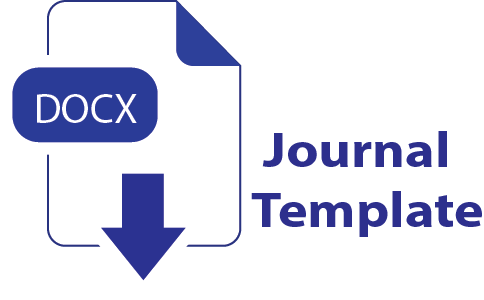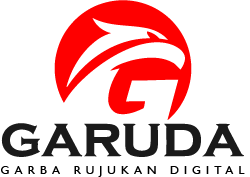ANALISIS CLUSTER FAKTOR PENUNJANG PENDIDIKAN MENGGUNAKAN ALGORITMA K-MEANS (STUDI KASUS: KABUPATEN KARAWANG)
DOI:
https://doi.org/10.36595/jire.v5i2.701Keywords:
pendidikan, klasterisasi, k-means, kabupaten karawangAbstract
Education is one of the means to create and improve the quality of better human resources. This is expected to improve human welfare. Based on data from the Ministry of Education and Culture, there are 4 sub-districts in Karawang Regency that do not have state high schools. This can result in difficulties for students who have financial deficiencies which can ultimately lead to dropping out of school. Then apart from that distance can also be an obstacle. The purpose of this study is to apply the clustering method for the distribution of educational supporting factors in Karawang District so that later this research can improve the quality of education evenly in Karawang District, not only concentrated in certain areas by paying attention to educational supporting factors. The algorithm used in this research is K-Means. The elbow method used in determining the optimal cluster supported by the silhouette method resulted in the best number of clusters being 2 clusters. The results of the clustering evaluation resulted in Davies-Bouldin Index (DBI) value of 0.408 and Silhouette Coefficient value of 0.747 (strong structure). Cluster 1 consists of 7 sub-districts and Cluster 2 consists of 23 sub-districts. Based on the results of clustering analysis, Cluster 1 has the average number of attributes of schools, teachers, classes, laboratories, libraries at all levels of education (SD, SMP, SMA, SMK, and SLB) with state status and the population shows higher results if compared with the average number of each attribute in Cluster 2. So it can be concluded that Cluster 1 is a high category and Cluster 2 is a low category.
Downloads
References
E. Y. T. P. Dewi and I. Kamila, “PENGELOMPOKAN WILAYAH BERDASARKAN FAKTOR PENDUKUNG PENDIDIKAN DENGAN JUMLAH SEKOLAH DAN JUMLAH GURU MENGGUNAKAN ALGORITMA K-MEANS,” INTERVAL J. Ilm. Mat., vol. 2, no. 1, pp. 1–12, 2022.
S. Kartika, H. Husni, and S. Millah, “Pengaruh Kualitas Sarana Dan Prasarana Terhadap Minat Belajar Siswa Dalam Pembelajaran Pendidikan Agama Islam,” J. Penelit. Pendidik. Islam., vol. 7, no. 1, pp. 113–126, 2019.
A. Yoga Pratama, Y. Umaidah, and A. Voutama, “Analisis Sentimen Media Sosial Twitter Dengan Algoritma K-Nearest Neighbor Dan Seleksi Fitur Chi-Square (Kasus Omnibus Law Cipta Kerja),” J. Sains Komput. Inform. (J-SAKTI, vol. 5, no. 2, pp. 897–910, 2021.
L. Mutawalli, M. T. A. Zaen, and W. Bagye, “KLASIFIKASI TEKS SOSIAL MEDIA TWITTER MENGGUNAKAN SUPPORT VECTOR MACHINE (Studi Kasus Penusukan Wiranto),” J. Inform. dan Rekayasa Elektron., vol. 2, no. 2, p. 43, 2019, doi: 10.36595/jire.v2i2.117.
M. Hariyanto and R. T. Shita, “Clustering pada Data Mining untuk Mengetahui Potensi Penyebaran Penyakit DBD Menggunakan Metode Algoritma K-Means dan Metode Perhitungan Jarak Euclidean Distance,” Sist. Komput. dan Tek. Inform., vol. 1, no. 1, pp. 117–122, 2018.
W. Utomo, “The comparison of k-means and k-medoids algorithms for clustering the spread of the covid-19 outbreak in Indonesia,” Ilk. J. Ilm., vol. 13, no. 1, pp. 31–35, 2021, doi: 10.33096/ilkom.v13i1.763.31-35.
Y. A. Priambodo and S. Y. J. Prasetyo, “Pemetaan Penyebaran Guru di Provinsi Banten dengan Menggunakan Metode Spatial Clustering K-Means (Studi kasus?: Wilayah Provinsi Banten),” Indones. J. Comput. Model., vol. 1, no. 1, pp. 18–27, 2018, doi: 10.24246/j.icm.2018.v1.i1.p18-27.
F. Nur, M. Zarlis, and B. B. Nasution, “Penerapan Algoritma K-Means Pada Siswa Baru Sekolah menengah Kejuruan Untuk Clustering Jurusan,” InfoTekJar (Jurnal Nas. Inform. dan Teknol. Jaringan), vol. 1, no. 2, pp. 100–105, 2017, doi: 10.30743/infotekjar.v1i2.70.
Euis Saraswati, Yuyun Umaidah, and Apriade Voutama, “Penerapan Algoritma Artificial Neural Network untuk Klasifikasi Opini Publik Terhadap Covid-19,” Gener. J., vol. 5, no. 2, pp. 109–118, 2021, doi: 10.29407/gj.v5i2.16125.
D. L. Rianti, Y. Umaidah, and A. Voutama, “Tren Marketplace Berdasarkan Klasifikasi Ulasan Pelanggan Menggunakan Perbandingan Kernel Support Vector Machine,” STRING (Satuan Tulisan Ris. dan Inov. Teknol., vol. 6, no. 1, p. 98, 2021, doi: 10.30998/string.v6i1.9993.
M. Wahyudi and S. Pujiastuti, Lise, “Penerapan Data Mining Dalam Mengelompokkan Data Pengangguran Terbuka Menurut Provinsi Menggunakan,” Pros. Semin. Nas. Ris. dan Inform. Sci., vol. 2, pp. 432–440, 2020.
M. Riyyan and H. Firdaus, “PERBANDINGAN ALGORITME NAÏVE BAYES DAN KNN TERHADAP DATA PENERIMAAN BEASISWA (Studi Kasus Lembaga Beasiswa Baznas Jabar),” J. Inform. dan Rekayasa Elektron., vol. 5, no. 1, pp. 1–10, 2022.
D. A. I. C. Dewi and D. A. K. Pramita, “Analisis Perbandingan Metode Elbow dan Silhouette pada Algoritma Clustering K-Medoids dalam Pengelompokan Produksi Kerajinan Bali,” Matrix J. Manaj. Teknol. dan Inform., vol. 9, no. 3, pp. 102–109, 2019, doi: 10.31940/matrix.v9i3.1662.
A. F. Khairati, A. . Adlina, G. . Hertono, and B. . Handari, “Kajian Indeks Validitas pada Algoritma K-Means Enhanced dan K-Means MMCA,” Prism. Pros. Semin. Nas. Mat., vol. 2, pp. 161–170, 2019, [Online]. Available: https://journal.unnes.ac.id/sju/index.php/prisma/article/view/28906.
Additional Files
Published
How to Cite
Issue
Section
License
Semua tulisan pada jurnal ini menjadi tanggungjawab penuh penulis.













